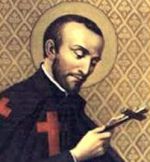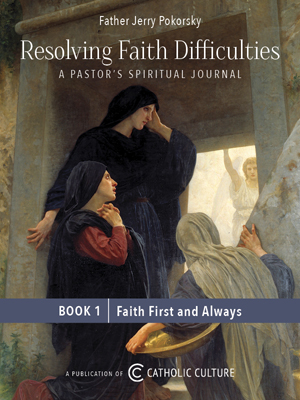With new cardinals, a few surprises
By Phil Lawler ( bio - articles - email ) | Jan 13, 2014
It was no surprise when Pope Francis named the first cardinals of his pontificate at his Sunday public audience. And considering how often the Holy Father had tossed aside conventional thinking, his choices were not terribly surprising, either.
As expected, the Pope’s 19 selections included a preponderance of prelates from the southern hemisphere. Yet there were 6 Europeans on the Pope’s list, and 4 Italians. So while his choices will increase the geographic diversity of the College of Cardinals, the effect will not be dramatic.
Pope Francis has stressed his desire to decentralize the administration of the universal Church, and some observers wondered whether he would make his point emphatically by declining to bestow red hats on leading members of the Roman Curia. He did not. The Secretary of State, Archbishop Pietro Parolin, will be a cardinal; as will the prefect of the Congregation for the Doctrine of the Faith, Archbishop Gerhard Ludwig Müller. Add to that list Archbishops Beniamino Stella, prefect of the Congregation for Clergy; and Lorenzo Baldisseri, secretary-general of the Synod of Bishops, and the most powerful figures in the Curia will all be cardinals. It is significant, perhaps, that no other Vatican officials were on the Pope’s list. But then if he had included other Curial prelates, he would not have had as many spots available for Latin American and African prelates.
Of course, the Pope might have made a grand gesture by appointing a larger number of new cardinals. He is not bound by the requirement (set by Pope Paul VI) that the number of electors should not exceed 120. The reigning Pontiff has the authority to expand the College if he chooses to do so; Blessed John Paul II briefly pushed the number of cardinal-electors up to 137. But Pope Francis chose to stick close to the established limit; there will be only 122 voting cardinals after the February consistory, and that number will drop back to 120 by the end of March.
Among the residential archbishops who will receive red hats, only one is Italian. Another is British, one Canadian, and the remainder are all from Africa, Asia, and Latin America. Yet nearly all of those selected are archbishops of major metropolitan sees, traditionally led by cardinal-archbishops.
So which are the surprising choices?
- Archbishop Orlando Quevedo of Cotabato. It is not remarkable that the Pope chose another cardinal from the Philippines, a country with an enormous and growing Catholic population. But Cotabato has never before had a cardinal-archbishop. The archdiocese is located in Mindanao, in the southern Philippines, where Christians face a growing challenge from Islamic separatists.
- Bishop Chibly Langlois of Les Cayes. Haiti has never before had a residential cardinal, and the Pope passed over two archbishops to choose the relatively young (55) leader of an impoverished diocese.
- Archbishop Gualtiero Bassetti of Perugia. The Italian archdiocese has not boasted a cardinal-archbishop in 160 years—although that prelate was the future Pope Leo XIII. In selecting Archbishop Bassetti, the Pope chose not to confer a red hat on Archbishop Francesco Moraglia, the Patriarch of Venice; or Archbishop Cesare Nosiglia of Turin. Both Venice and Turin boast long lines of cardinals (and in the case of Venice, three twentieth-century Popes). Here the Pope’s choice does clearly point toward a shake-up of the Italian hierarchy.
At least for this first consistory, Pope Francis did not reach out to include leaders of the Eastern churches in communion with the Holy See. Major Archbishop Sviatoslav Shevchuk, the head of the Ukrainian Catholic Church—by the far largest of the Eastern Catholic churches—was not on the Pope’s list. Nor was Archbishop Diarmuid Martin of Dublin, who had been strongly recommended by some Vatican-watchers because of his outspoken criticism of the Church’s handling of sex-abuse complaints.
All comments are moderated. To lighten our editing burden, only current donors are allowed to Sound Off. If you are a current donor, log in to see the comment form; otherwise please support our work, and Sound Off!
-
Posted by: pontifex0029622 -
Jan. 16, 2014 7:25 PM ET USA
I would divide liberals into two groups: the so called intelligentia and clergy who should know better. The second group consists of the uninstructed faithful, educated and uneducated. The second group presents us with the greatest hope...they are only a retreat or a parish mission away from conversion. Let us not despair of the hopes for the second group. More to come in the future.
-
Posted by: -
Jan. 15, 2014 12:59 PM ET USA
I agree with gfdsmith9280. Nichols should have remained blacklisted.
-
Posted by: geoffreysmith1 -
Jan. 14, 2014 1:26 PM ET USA
Another surprising choice - not to say astonishing - is that of Archbishop Nichols of Westminster. This is the ordinary who was admonished by Benedict XVI to stop the celebration of "gay" Masses in his diocese, but continued to do so by passing the buck to the Jesuits, who now have the Masses in their church at Farm St, London. In view of Nichols' defiance of the Magisterium, his election to the Sacred College is a cause for concern, not celebration.








